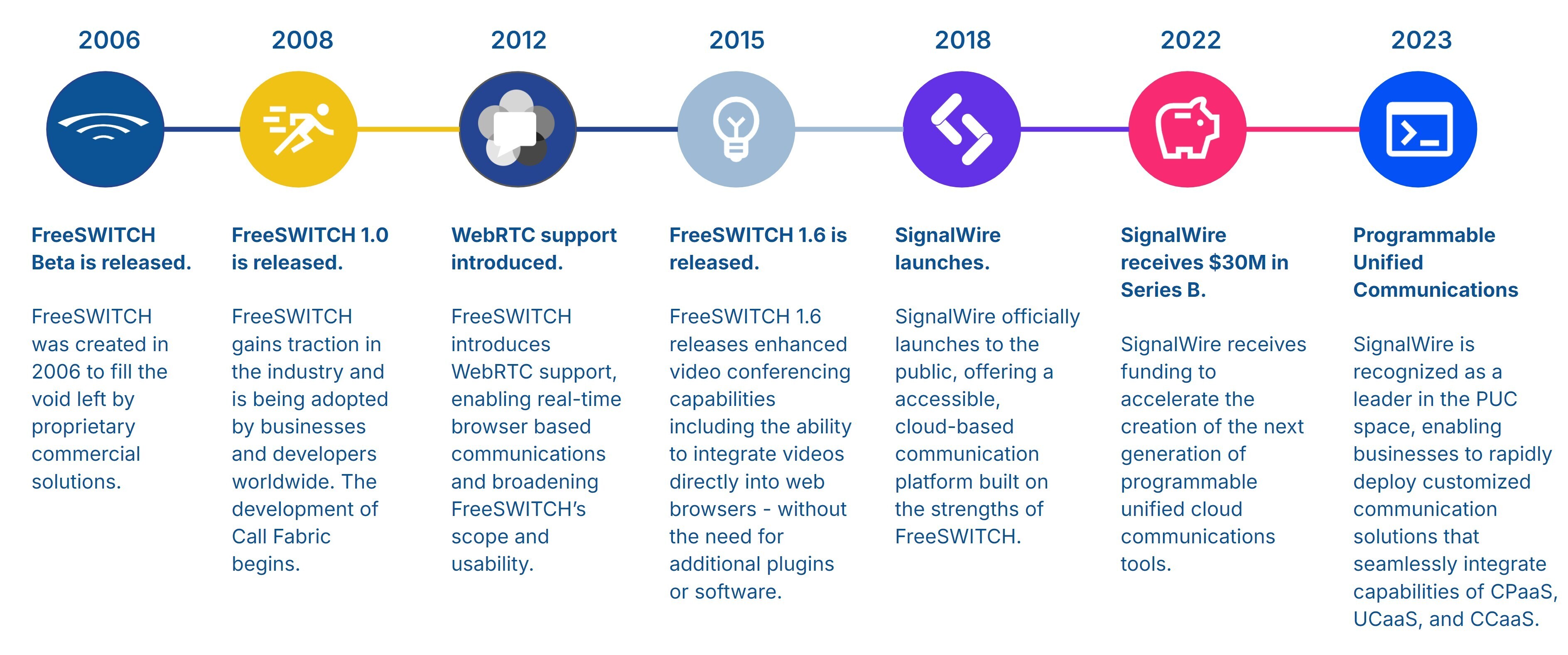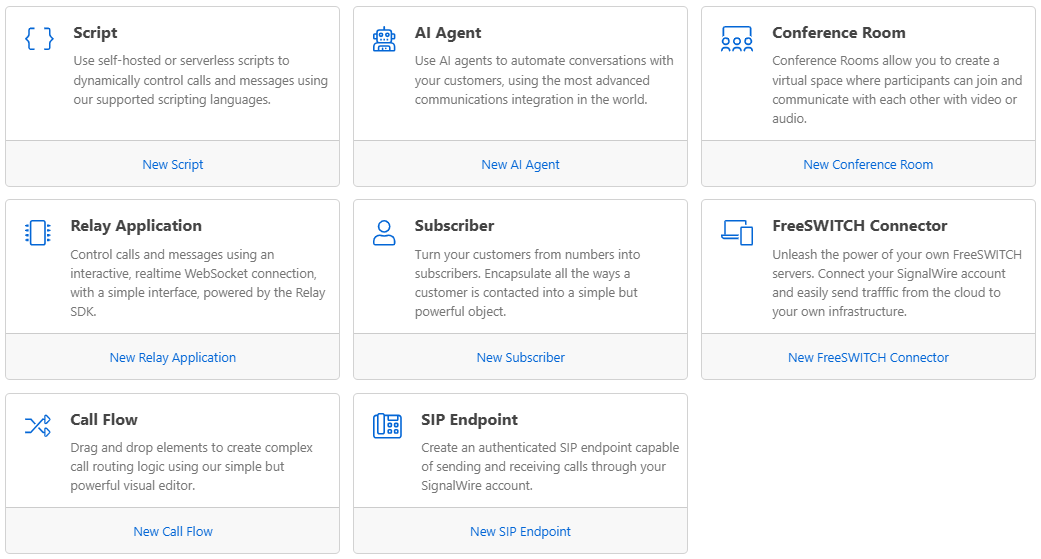The year 2006 marked the beginning of a telecom revolution. Anthony Minessale, Brian West, and Michael Jerris launched FreeSWITCH, a groundbreaking open-source telephony platform. Over the next 20 years, FreeSWITCH became the foundation for countless communication systems, transforming entire industries around the world. Between thousands of unique deployments, millions of end users, and billions in revenue generation, its impact cannot be understated.
This year, as we celebrate 20 years of open-source excellence, we’re reflecting on the journey of FreeSWITCH and its evolution into SignalWire—a company founded by the same creators to extend the mission of building accessible telecom. Founded in 2017, SignalWire is a cloud communications platform, offering a modern, scalable solution for programmable unified communications (PUC).
What began as an open-source telephony project has allowed many companies to thrive, including SignalWire. Two decades later, it’s the perfect moment to explore FreeSWITCH history, its pivotal role in telecom, and how SignalWire will continue forward.
Revolutionizing communications for 20 years
FreeSWITCH emerged in response to the limitations of traditional telephony systems. Its modular architecture, scalability, and open-source availability made it the go-to choice for developers and enterprises seeking powerful, flexible communication solutions.
The project was born out of a need to create a stable way to implement telecom solutions without the common constraints of the time. In the early 2000s, the industry was grappling with high costs, proprietary lock-ins, and a lack of flexibility. FreeSWITCH offered a solution with an open-source telephony stack that quickly became the backbone of countless platforms and businesses.
The FreeSWITCH community also thrived through ClueCon, an annual developer conference launched in 2005. ClueCon became a gathering place for innovators, fostering collaboration and inspiring advancements in communications technology.
The first iteration of ClueCon led to the founding of FreeSWITCH the following year. ClueCon is intertwined with the FreeSWITCH project, serving as a gathering place for the global community. Over the last 20 years, it has become the hub where developers collaborate, share knowledge, and push the boundaries of what’s possible with FreeSWITCH and other open-source projects. And it’s still going today!
Extending the FreeSWITCH mission with Call Fabric
In 2018, Anthony Minessale and the core FreeSWITCH developers founded SignalWire to tackle a new set of challenges. While FreeSWITCH provides a powerful base for building telecom systems, it has a steep learning curve that requires truly advanced technical expertise to navigate. SignalWire aims to simplify this complexity to make building telecom more accessible while retaining the power of the open-source platform.
SignalWire Call Fabric was born out of this vision to simplify the powerful but complex nature of FreeSWITCH, offering an alternative for building custom telecom with features like low-latency AI integration and low-code builders. Call Fabric transforms FreeSWITCH’s modular architecture into programmable building blocks (resources), enabling developers to quickly design and deploy advanced communication pathways.
Call Fabric is a direct evolution of FreeSWITCH’s core concepts, elevated for the modern era of cloud communications. However, it is more accessible and easy to learn, with tools to create programmable voice, AI, video, and messaging systems without building infrastructure from scratch.
Unlike many platforms that are built on FreeSWITCH, SignalWire is its direct descendant, supported by the same team that built the original platform. The core developers who have maintained FreeSWITCH for 20 years continue to innovate within SignalWire.
In addition to upkeeping FreeSWITCH and offering expert support to FreeSWITCH Advantage users, the team is available for public calls twice a month through Office Hours.
Adding AI and more to FreeSWITCH
SignalWire allows you to build without discarding the FreeSWITCH stack with the help of FreeSWITCH connectors, modules, and a compatible AI Agent framework to create sophisticated, low-latency digital assistants for repetitive tasks.
This integration allows you to extend functionality through SignalWire’s features. SignalWire works alongside FreeSWITCH, offering an upgrade path rather than a replacement.
SignalWire’s approach allows organizations to modernize their communications systems while keeping FreeSWITCH. Developers can leverage SignalWire’s tools—such as SignalWire Markup Language (SWML) and its APIs—to rebuild systems in a cloud-native environment. This flexibility ensures that you can continue to rely on FreeSWITCH while taking advantage of SignalWire’s modern cloud capabilities.
The future of FreeSWITCH and SignalWire, together
SignalWire’s commitment to FreeSWITCH remains unwavering. The open-source project isn’t going anywhere and continues to be supported by the core developers who created it. As FreeSWITCH celebrates 20 years, its legacy lives on not just in the thousands of applications and systems it powers, but also in SignalWire.
The story of SignalWire is the story of FreeSWITCH—a continuation of the mission to make telecom programmable, flexible, and accessible. Enhancements to SignalWire are a continuation of the original vision to offer new telecom tools for a modern world.
While it is the natural evolution of FreeSWITCH, SignalWire also ensures that the innovation and principles behind the project, as well as FreeSWITCH itself, live on.
Whether you’re a long-time FreeSWITCH user or new to the world of programmable communications, SignalWire provides the resources to innovate with the help of our developer community. Join us at ClueCon to meet fellow FreeSWITCH enthusiasts and SignalWire users, and find our team on our community Slack.



